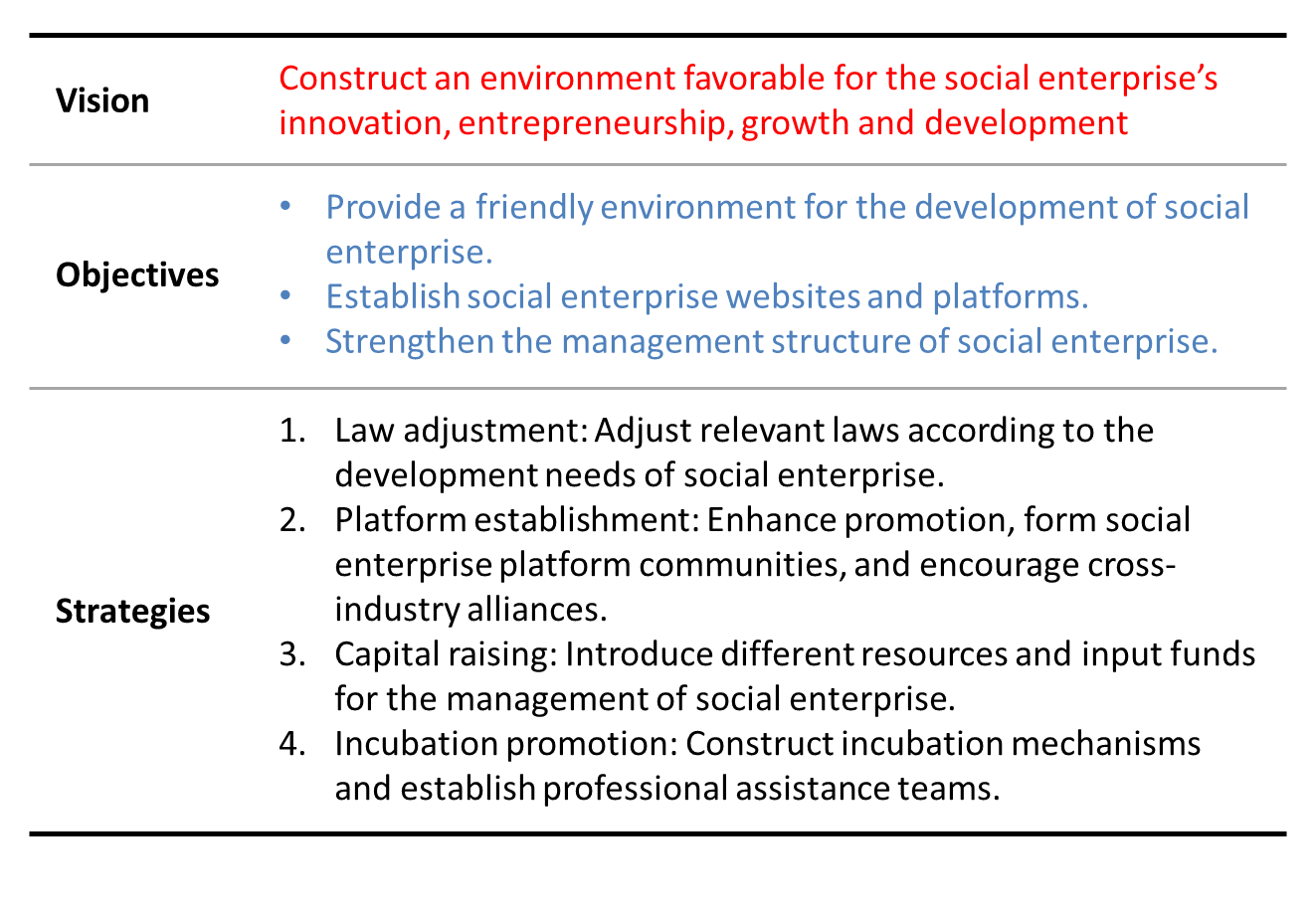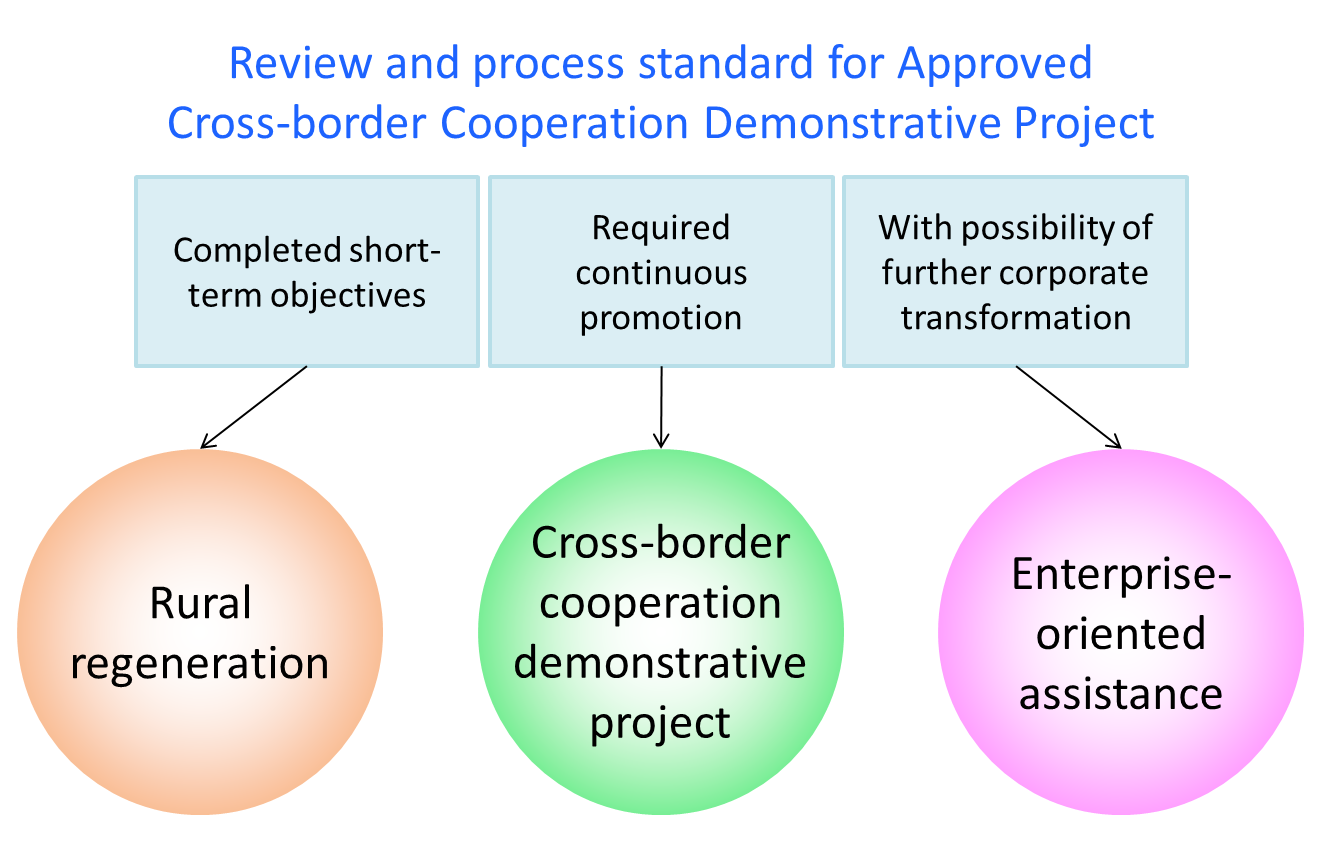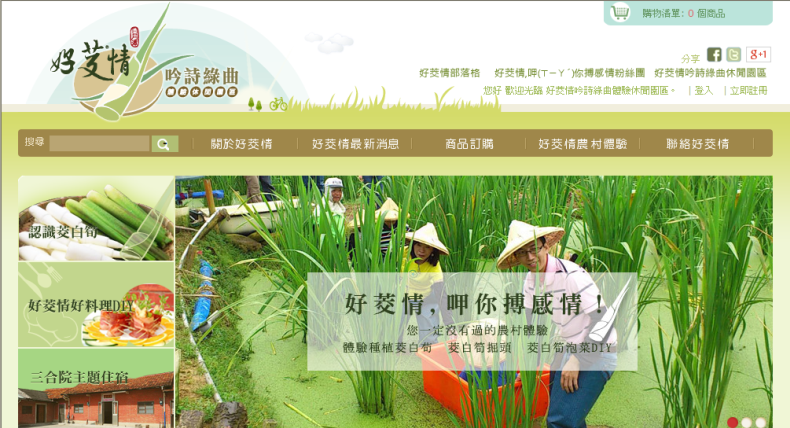Introduce Rural Community Industry into Social Enterprise
2015.3 (Issue No. 273)
I. Opportunity
The changes of network system, science and technology, transportation, consumer behavior, and the whole industry environment boost the transformation of industrial structure and market trend in continuous response to the times and consumer′s demands. However, industries will not disappear but constantly evolve in response to the changes. Jim Rogers, a renowned investment master, once said in 2012 that after 10 years, the farmers are going to drive Lamborghinis while the stock brokers are going to be drive taxis and tractors for the farmers. His remark apparently shows that agriculture is not a sunset industry. Instead, agriculture can create a new situation through creativity, innovation and technology, nurturing a large number of science-minded farmers with leading capabilities. A new era for the farmers has come.
The rural community industry is one of the modes that vibrate agricultural economic activity. In 2012, the Soil and Water Conservation Bureau (SWCB) of the Council of Agriculture (COA) integrated resources and technologies of all departments, and established cross-border cooperation platforms. The Bureau is devoted to promoting a demonstration project, rural regeneration integrating industrial development in cross-border cooperation. Problems related to the rural community’s industrial technology, quality, packaging and retailing channels are expected to be solved. The goal is to create a new opportunity for the rural community industry.
II. Rural regeneration integrating industrial development in cross-border cooperation
1. Operation mode
The demonstration project, rural regeneration industrial development plan in cross-border cooperation, is driven by establishing platforms that connect the nation’s rural communities as well as public and private sectors. Among them, the general platform functions as a matchmaker between the rural community’s industrial development needs and various departments. The regional platform is to select communities, check resources, draft projects, coordinate with different departments, and assist responsible units to execute plans according to the principle of specialization.
On the implementation of the policy, different resources of COA’s departments are integrated to improve the rural community’s industrial technology and resolve problems of production environment. Moreover, the concept of value-added industrial chain is also introduced to differentiate the rural community industry from the past traditional production. In the process of promoting cross-border cooperation, through the assistance from COA’s Agricultural Research and Extension Stations, Agricultural Research Institute, and Agriculture and Food Agency, the young people interested in farming are able to learn agricultural production techniques and related knowledge, so as to implement the policy of fostering the young farmers.
2. Issues faced in the process of implementation
The demonstration project, rural regeneration industrial development in cross-border cooperation, aims to integrate resources from different departments and effectively put them into rural community development. Moreover, the project gives the most direct assistance according to the issues faced by different rural communities, such as technology, knowledge and production environment. At present, those under assistance are mostly community organizations. Compared with enterprise management, however, community organizations still have some problems. Firstly, the management entity is unclear. For instance, the election of the chairman in charge of community organization takes place every four years. And the development of rural community industry is highly related to who is in charge now. Secondly, most rural communities are in short of fulltime employees, professional capabilities, operation funds and marketing channels. These make people worry about the sustainable development of rural community.
3. Subsequent execution direction
In view of the issues on community organization and management, the COA’s SWCB has planned related mechanisms, hoping governmental agencies to provide necessary professional incubation counseling, assistance and capital. It encourages rural communities to move toward enterprise management and fosters rural community enterprises, so they are able to help solve their local social or environmental problems.
III. Motivation
1. Change of public awareness
“Consumers are no longer a group of objects simply with the purchase demand but a group with thoughts and feelings.” Affected by the external environment, consumption patterns have begun to change. Consumer’s awareness is hidden with different ideas and meanings. Consumption is not a simple purchase behavior. A number of factors may contain in the process or purpose, such as being moved by producer’s devotion, choice of eco-friendly materials or care for the disadvantaged. Therefore, the “social enterprise” just comes into being at this time. According to the website of Social Enterprise Insights, a social enterprise is defined as “an organization using a business model to solve social or environmental problems, an enterprise organization whose mission is to resolve social or environmental problems and whose method is marketing strategy. Its surpluses are used to invest in the social enterprise itself, tackle social or environmental problems, rather than to seek the best interests for its investors or owners.”
2. Guidance by central policy
The Executive Yuan convened in April 2014 to discuss some issues related to the social enterprise. It instructed to create a friendly environment for the development of social enterprise, boosted domestic economic and social growth, and drafted the “social enterprise action plan.” It is expected to construct an environment favorable for the social enterprise’s innovation, entrepreneurship, growth and development.
Photo 1: Vision, objectives and strategies of social enterprise action plan.

IV. Approach
1. Continue rural regeneration industrial development in cross-border cooperation
Cross-border cooperation is useful to upgrade the rural community industries. Through the integration of resources and assistance, it can effectively solve problems about production technology and environment of rural community industries. Moreover, under assessment, the demonstration project, rural regeneration integrating industrial development in cross-border cooperation, can expand the industrial scale of rural community, create employment opportunities, and attract the young people interested in farming. It is expected to introduce new economic vitality into rural communities, maintain development power, increase rural labor force, and promote industrial recovery and innovation in rural communities. Afterwards, it would focus on current successful examples of rural community industry, copy their models and experiences to other rural communities, and combine the promotion of rural regeneration. The goal is to create truly fertile and livable rural villages.
2. Promote the enterprise management for rural community industry
In the past, rural communities were the main management entities in charge of rural regeneration and industrial cross-border cooperation. But their personnel changed often and they lacked professional managers as well as planning techniques of industrial management. Now the SWCB timely introduces enterprise management into rural communities, hoping to develop them with bigger scales and market-oriented competitiveness. To do so, the development of rural community industry must be handled by professional companies and fulltime managers, which could implement rural regeneration in cross-border cooperation more effectively. At the end of 2014, the SWCB has begun to draft the “outlines for the provision of guidance to promote enterprise management for the rural community industry.” It is expected by means of mechanisms such as professional counseling and financial assistance to encourage the rural community industry to move toward enterprise management.
3. Introduce the concept of social enterprise to support rural enterprises
During the past process of implementing rural regeneration, the regulations have been drawn, personnel have been trained, and cross-department platforms have been established. Moreover, the rural regeneration funds are available to pay for rural related works. Thus, there is a big opportunity to introduce the concept of social enterprise into the rural community industry. Under enterprise-oriented assistance, the rural industry can be managed sustainably. Surpluses and profits can stabilize enterprises’ organization and management. Therefore, rural enterprises are able to enhance the quality and quantity or the processing technology of local agricultural production, improve rural labor employment, and solve domestic social and environmental problems.
Photo 2: Subsequent direction of executing the cross-border cooperation project

V. Case study: Yishin Community
Yisin Community is located in Puli Township, Nantou County. In Puli, the most important crop is water bamboo, and its planting area reaches over 1,200 hectares. Yishin Community occupies 40 hectares and employs about 150 people, 60 of them in their prime of life. Driven by the young farmers, Yishin Community is devoted to upgrading the quality and quantity of water bamboo, processing preservation, packaging marketing, and rural tourism experience. Therefore, it prompts the technology and innovative service for more communities to plant water bamboos.
In the project rural regeneration industrial development in cross-border cooperation, the Yishin Community’s core industry is defined as a type of water bamboo and whitefish ecotourism experience. It differentiates target markets and consumer groups by promoting safe agriculture and restoring Taiwan whitefish. In the assistance process, the community works with the Forestry Bureau and Tse-Xin Organic Agriculture Foundation, to acquire the conservation mark by restoring Taiwan whitefish. Furthermore, it works with the Taichung District Agricultural Research and Extension Station, and Industrial Technology Research Institute, to import techniques of safe agriculture and technology agriculture, reduce nighttime light pollution, and restore ecological environments. It not only solves local environmental problems but also creates community products different from other competitors, which indeed achieves the goal of earth-friendly agricultural production.
Photo 3: Refuge pool for Taiwan whitefish

The key persons of Yishin Community are Lian, Mei-yu, Lin, Yu-tsen and Chen, Shin-howe. They not only specialize in community management, agricultural production technology and ecological restoration, but are also keen on handling related affairs. However, community organizations have no permanent members and offer positions without remuneration. To manage communities in a long run as the main business is very difficult. Despite the current operation of Yishin Community containing the concept of social enterprise, there is still a long way to go in terms of the industrial sustainable management. Lin, Yu-tsen founded an Internet store in 2010, using blogs to sell her homemade water bamboo pickles. Later she established a water bamboo leisure park and adds water bamboo ecological experience tours. Moreover, she gathered different communities to jointly promote the conservation mark, restore Taiwan whitefish, and actively open up marketing channels, such as Homemakers Union Consumers Co-op, News & Market, and Leezen Co., Ltd. In the near future, this kind of agricultural cooperatives would be established, and enterprise management model could be adopted, so as to increase sales of local organic water bamboo. It is expected that high sales can attract more community farmers to grow organic water bamboos, in order to fulfill the goal of preserving ecological environment and restoring whitefish.
Photo 4: Website of water bamboo leisure park

Photo 5: Conservation mark

The COA’s SWCB offers enterprise-oriented assistance to the rural community industry. For the Yishin Community’s cooperatives set up by the farmers or enterprises operated by single entrepreneurs, the SWCB can provide related professional counseling and financial assistance. This enables social enterprises to start from rural communities. As the complete mechanism and model are constructed, people can replicate this experience into other rural communities. The goal is to establish successful social enterprises that belong to the rural community industry.
VI. Specific impacts and benefits
From the promotion of rural regeneration to the implementation of cross-border cooperation and to the enterprise-oriented guidance of rural community industry, rural communities are assisted in many aspects, such as personnel training, consensus building, change of farmers' thoughts, investment of technology and capital, and helping rural communities toward self-sufficiency and sustainable development. Although resources, the number of assisted rural communities, and capital were limited in the beginning, its effect is not negligible. When the government’s assistance reaches a certain extent, its impact will spread to other areas. This would form a positive force that changes the social atmosphere and results in the following three significant impacts:
1. Change of concept: Continuous learning and experience sharing can convert people’s thinking. Agricultural development is no longer about traditional production mode. What people know, feel and care about their hometown is different from the past.
2. Focus on sustainability: The management of rural community industry should contain the concept of sustainable development, escape the thought of long-term reliance on the government’s subsidies, and move toward enterprise-oriented management. Rural communities should employ professionals to manage, strengthen organizational functions, and stress costs and profits. This can let the community industry develop sustainably through the enterprise-oriented process.
3. For society: Pay attention to local environments and social problems, and increase the participation of community service. For the rural community industry under enterprise management, its surpluses are not merely used to invest in the enterprise itself. Part of its main surplus is used to resolve social or environmental problems, rather than to seek the best interests for its investors or owners. It fits the idea of what is taken from the society gives back to the society.
